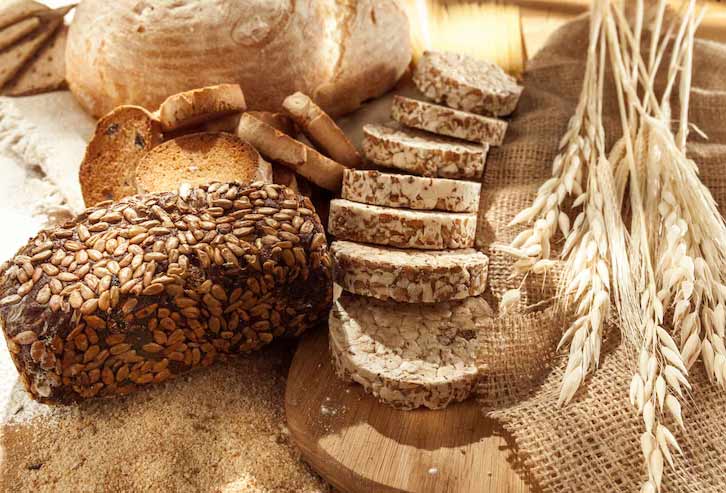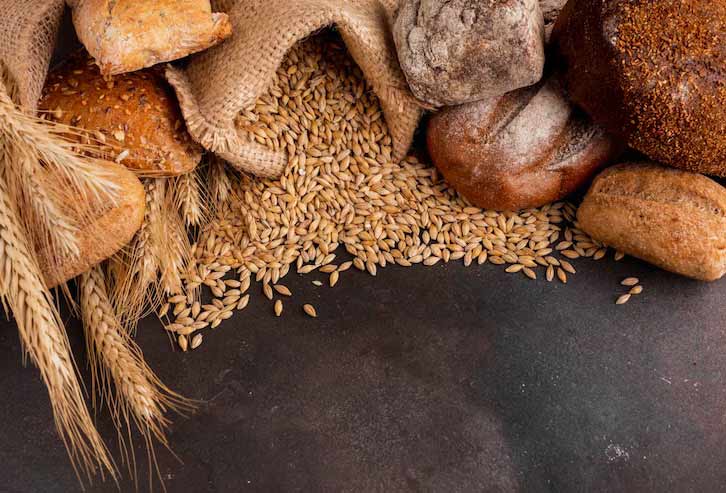Gluten-free cooking and baking is a popular dietary choice for people who have celiac disease, gluten intolerance, or wheat allergy. Gluten is a protein found in wheat, barley, and rye, which can trigger an autoimmune response in people with celiac disease, causing damage to their small intestine.
Even if you don’t have celiac disease, some people choose to adopt a gluten-free diet for various reasons, such as improving digestive health, managing symptoms of other autoimmune disorders, or promoting overall wellness.
What is Gluten-free cooking?
Gluten-free cooking refers to the process of preparing food without using any ingredients that contain gluten, a protein found in wheat, barley, rye, and some other grains. Gluten-free cooking is important for people who have celiac disease or gluten sensitivity because consuming gluten can cause serious health problems for them.

Gluten-free cooking requires careful attention to ingredients and preparation methods. Some common ingredients that are avoided in gluten-free cooking include wheat flour, barley malt, and rye bread. Instead, gluten-free flours such as rice flour, almond flour, coconut flour, or chickpea flour are used to replace wheat flour.
Other ingredients that can contain gluten include sauces and condiments, such as soy sauce, Worcestershire sauce, and malt vinegar. These ingredients need to be replaced with gluten-free versions or omitted altogether.

In gluten-free cooking, it’s also important to prevent cross-contamination with gluten-containing ingredients. This means using separate cutting boards, utensils, and cookware for gluten-free food preparation, and avoiding cooking with utensils that have been used to prepare gluten-containing foods.

Despite these challenges, there are many delicious and nutritious gluten-free dishes that can be prepared. Gluten-free cooking can include a wide variety of foods, such as fresh fruits and vegetables, lean proteins, and whole grains that are naturally gluten-free, such as quinoa, rice, and buckwheat.
Overall, gluten-free cooking is an essential part of a healthy lifestyle for people with celiac disease or gluten sensitivity, and it can be a rewarding and delicious way to explore new ingredients and flavors.
Gluten-free cooking and baking
Gluten-free cooking and baking can seem daunting at first, but with some helpful tips and tricks, it can be a fun and enjoyable way to explore new flavors and ingredients.

Here are some gluten-free cooking and baking tips to help you get started.
Know your gluten-free flours
One of the most important aspects of gluten-free cooking and baking is understanding the different types of gluten-free flours available. Some common gluten-free flours include rice flour, almond flour, coconut flour, and tapioca flour. Each flour has a unique texture, flavor, and baking property, so it’s important to know how to use them effectively in your recipes. You can experiment with different flour combinations to achieve the desired texture and taste for your dishes.
Use xanthan gum or guar gum as a binder
Gluten is a natural binder that holds together the ingredients in baked goods, and without it, gluten-free baked goods can turn out crumbly or dry.

To achieve a similar binding effect, you can use xanthan gum or guar gum, which are plant-based thickeners. They help create a smooth texture and hold together the ingredients in gluten-free doughs and batters. You only need a small amount of xanthan or guar gum for each recipe, typically around 1/4 to 1/2 teaspoon per cup of flour.
Don’t overmix your doughs and batters
When working with gluten-free flours, it’s important not to overmix your doughs and batters. Overmixing can cause the baked goods to become tough or gummy.

Instead, mix the ingredients until just combined, and avoid using a mixer on high speed. You can also let the dough rest for a few minutes before shaping or baking, which allows the flours to absorb the liquids and create a smoother texture.
Replace wheat-based ingredients with gluten-free alternatives
If you’re adapting a recipe that contains wheat-based ingredients, such as bread crumbs or pasta, you can replace them with gluten-free alternatives. For example, you can use gluten-free bread crumbs made from rice or corn, or use gluten-free pasta made from quinoa or lentils. You can also replace wheat flour in a recipe with a gluten-free flour blend, which is a mixture of different gluten-free flours designed to mimic the texture of wheat flour.
Check your ingredients for hidden gluten
Gluten can be found in many unexpected ingredients, such as soy sauce, Worcestershire sauce, and beer. It’s important to check the ingredient list and labels carefully to ensure that the products you’re using are gluten-free. Some manufacturers may also use shared equipment or facilities, which can lead to cross-contamination with gluten. Look for products that are certified gluten-free by a trusted third-party organization, such as the Gluten-Free Certification Organization (GFCO).
Explore new ingredients and recipes
Gluten-free cooking and baking can be a great opportunity to explore new ingredients and recipes. There are many delicious and nutritious gluten-free foods available, such as quinoa, brown rice, chickpea flour, and almond milk. You can also try new recipes that are naturally gluten-free, such as stir-fries, salads, and soups.
Pay attention to texture and consistency
When working with gluten-free flours, it’s important to pay attention to the texture and consistency of the dough or batter. Gluten-free doughs tend to be more crumbly and less elastic than wheat-based doughs, so you may need to adjust the amount of liquids or use a different binding agent.

For example, you can add a bit more oil or eggs to a dough to create a smoother texture. You can also experiment with different binding agents, such as chia seeds or psyllium husk, which can add a bit of elasticity to gluten-free doughs.
Use alternative sweeteners
Many traditional sweeteners, such as honey and molasses, contain traces of gluten due to cross-contamination during processing. To avoid gluten, you can use alternative sweeteners, such as maple syrup, coconut sugar, or stevia. These sweeteners are also lower in calories and have a lower glycemic index than traditional sweeteners, which can help stabilize blood sugar levels.
Don’t be afraid to ask for help
If you’re new to gluten-free cooking and baking, don’t be afraid to ask for help. There are many resources available, such as cookbooks, online forums, and support groups. You can also seek advice from a registered dietitian or a professional baker who specializes in gluten-free cooking. They can offer guidance on ingredient substitutions, recipe modifications, and baking techniques.
Practice patience and persistence
Gluten-free cooking and baking can be challenging at first, but with practice and patience, it can become second nature. Don’t get discouraged if your first few attempts don’t turn out perfectly. Keep experimenting with different ingredients and techniques until you find what works best for you. Remember that gluten-free cooking and baking can be a fun and rewarding way to explore new flavors and expand your culinary skills.
Conclusion Gluten-free cooking and baking
In conclusion, gluten-free cooking and baking can seem intimidating, but with the right tools and techniques, it can be a delicious and healthy way to enjoy your favorite foods.

By understanding the different types of gluten-free flours, using binders, checking labels for hidden gluten, and experimenting with new ingredients and recipes, you can create delicious and nutritious meals that everyone can enjoy. With a little patience and persistence, you can become a gluten-free cooking and baking expert in no time.
The last word is with you, the audience
Be sure to read other educational articles. For scientific issues, be sure to contact a specialist doctor. These materials are only for study and non-educational purposes. Of course, expert doctors can guide you a lot.

Our cooking training center has collected unique materials for you dear ones. This content is very useful and will help you cook the best and most delicious food for yourself and your loved ones at home.

The slogan we put on our site is to fight obesity. In this regard, we will provide you with many suitable recipes. Be sure to follow our site to learn about many healthy foods. Do not forget that a healthy life requires extensive changes. One of these changes is changing food. So eat healthy.
Please follow us on linkedin. You can learn all best french food recipe and best Italian food recipe and best arabic food recipes and best canadian food recipes you can check our Reddit page.
